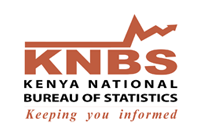
Agricultural Statistics refer to a branch of economic statistics that deals with the collection, processing and analysis of data on domesticated plants and animals. Rural statistics refer to broad range of statistics (economic, social, demographic, agricultural,etc.) covering the rural areas of a country. In this case rural statistics refer to those statistics that are agriculture related.
Agriculture sector is the backbone of Kenya’s economy. It contributes about 25 percent to the Gross Domestic Product (GDP) of Kenya and is the source of livelihood for most of the rural population; as such it is inevitably the key to food security and reduction of poverty. Agriculture is not only key to economic growth of Kenya but also the determinant of equity in development and is fundamental to reducing poverty and hunger.
Over the years, in order to improve the agricultural sector, Kenya has developed several policy documents the main ones being: Kenya Vision 2030 (2008-2030) which is the long term development blueprint for the country. Its aim is to transform Kenya to a newly industrializing middle income country providing a high quality life to its citizens by 2030. The Vision was motivated by a collective aspiration for a better society in Kenya by 2030. Implementation of the Vision would also enable achievement of the Sustainable Development Goals (SDGs) for Kenya.
Other agricultural policy documents developed over time included: Kenya’s Strategy for Revitalizing Agriculture (launched in 2004); Agricultural Sector Development Strategy (2010-2020); National Horticulture Policy, 2012; Fisheries Policy, 2008; National Livestock Policy, 2008; Kenya Forest Policy, 2008; Cooperative Development Policy, 2008; Food and Nutrition Security Policy, 2011; etc.
Credible data is required to inform and undertake the planning process; compilation of reliable national accounts; monitor sector performance; monitor and evaluate the impact of policies and programmes and contribute to the decision-making process. Agricultural data is required by a wide spectrum of stakeholders ranging from decision-makers in government, the private sector, academia for research and teaching and the donor community.
To enable monitoring and evaluation of the performance of agricultural development policies, through various indicators, it was imperative that the Ministry of Agriculture, Livestock and Fisheries and the Kenya National Bureau of Statistics, initiate the process of preparing the national strategy for the development of agricultural statistics.
Downloads…
